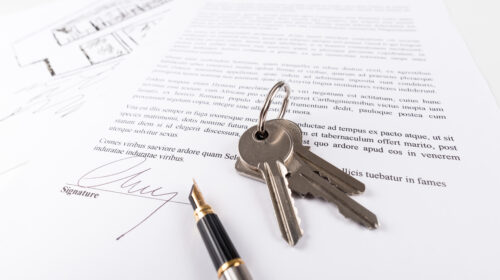Understanding the Total Cost of Occupancy
When signing a commercial lease, there are many factors that impact your overall cost. Understanding the total cost of occupancy is important both for budgeting and developing accurate financial forecasts over time, as well as for negotiation.
Recently, our Office Brokerage Group of Matt Gregory, Andy Dutcher and Philip Bird worked with The Joseph Group to secure a new office space. The Joseph Group had outgrown its current space of roughly 5,500 square feet and sought a space that could accommodate its current needs, but would also facilitate the organization’s anticipated future growth. However, this came with a caveat, The Joseph Group didn’t want to lease more space than it would immediately be able to use. Knowing this, the Office Brokerage Group was able to negotiate a takedown schedule or graduated rent schedule which allowed it to incrementally increase its space and rent over the course of the lease, ensuring that it wasn’t paying for space it wasn’t yet utilizing.
The ability to negotiate creative terms such as this takedown schedule is the result of an understanding of the components of a commercial office lease and the impact those terms have on the total cost of occupancy; therefore, we thought we’d take a closer look at some of the elements of a lease that can affect a tenant’s cost.
How is Rent Calculated?
Using the standards for calculating square footage established by the Building Owners and Managers Association (BOMA), the following components are used to calculate a tenant’s base rent.
Usable Square Footage (USF)
Usable square footage is the actual private or secured space an organization would occupy.
Load Factor or Common Area Factor
The load factor or common area factor is the metric that accounts for the shared spaces within a building. This is calculated by first determining the total square feet of common area and then determining what percentage of the total square footage the common area makes up. This is then divided among tenants according to their pro-rata share.
When you combine the USF with the load factor, you have the total rentable square footage. This is then multiplied by the rental rate and determines the base rent.
Understanding Lease Types
There are a variety of lease types, and each is structured differently. Understanding the lease type is fundamental to understanding your overall costs.
Net Lease (Triple Net Lease)
A net lease, also known as a triple net lease (NNN) is most commonly used in office leasing and is structured so that the tenant pays the base rent but is also responsible for its pro-rata share of the operating expenses. What is important to consider in terms of the total cost of occupancy, is that the tenant essentially is responsible for the risk associated with those expenses because occupancy always involves some form of variable expenses. For example, snow removal. If there is a year with above-average snowfall that essentially translates into an above-average expense, that cost will be passed along to the tenant. However, if the operating expenses come in below what was estimated, that money is refunded to the tenant. Due to the tenant’s responsibility for operating expenses, landlords are more likely to adjust the rental rate to be in line with the market often resulting in a lower price per square foot than a gross lease.
Gross Lease (Full-Service)
In a gross or full-service lease, all operating expenses are included in the rent. In this scenario, the risk is taken on by the landlord which will carry a higher rental rate.
Modified Gross Lease
A modified gross lease implies that the tenant and landlord negotiate which operating expenses each will be responsible for and the rate.
Percentage Lease
Most commonly used in retail, the rental rate is based on a percentage of sales made on the premises. Typically, this includes a clause for minimum rent.
Additional Rent, NNN & Common Area Maintenance (CAM)
When reviewing lease terms, you may encounter any one of these phrases, all of which allude to operating expenses but aren’t necessarily interchangeable. Common Area Maintenance or CAM expenses, are typically not all-encompassing and are one component of a NNN lease along with insurance and taxes. CAM charges may or may not include utilities or additional expenses such as janitorial services. If your lease includes CAM charges or any of these terms, make sure you understand what is included. Additionally, it is important to note the difference from Common Area Factor, which is a component of the equation used to determine base rent. Common Area Maintenance is the fee associated with maintaining the interior and exterior common space as well as the building mechanical systems and other capital items.
Rent Escalation
Leases typically include a rent escalation clause. This is necessary to protect the landlord from the volatility of the market. However, there are a number of ways that escalation will be factored into your commercial lease.
Fixed Increase
A fixed increase is a predetermined incremental change each year. It clearly states precisely how much rent will increase each year.
Fixed Percentage Increase
A fixed percentage increase states that rent will increase by an established flat percentage each year. For instance, a 3% increase on a base rent of $10 per square foot, would increase to $10.30 in the second year and to $10.61 the following year, and so on.
Inflation-based Increase
Inflation-based increases are based on the consumer price index and essentially say that rent will increase by a specified percentage based on increases in the market. For this type of increase, it is recommended that “carve-outs” are established which create a ceiling or floor for increases.
Percentage Rent
A percentage rent increase is most common in retail leases. This type of rent escalation clause establishes a base rent but then couples in with a percentage of sales.
Other Considerations
It’s important to remember that there are always unknowns with regard to cost, and opportunities to negotiate terms. Items such as tenant improvement costs, concessions such as free rent, caps on management fees and other expenses, and even the tax benefits associated with leasing versus buying, all affect your total cost of occupancy. It’s important to have representation that is knowledgeable of the nuances associated with your property type in order to negotiate terms that are most beneficial for your organization.




